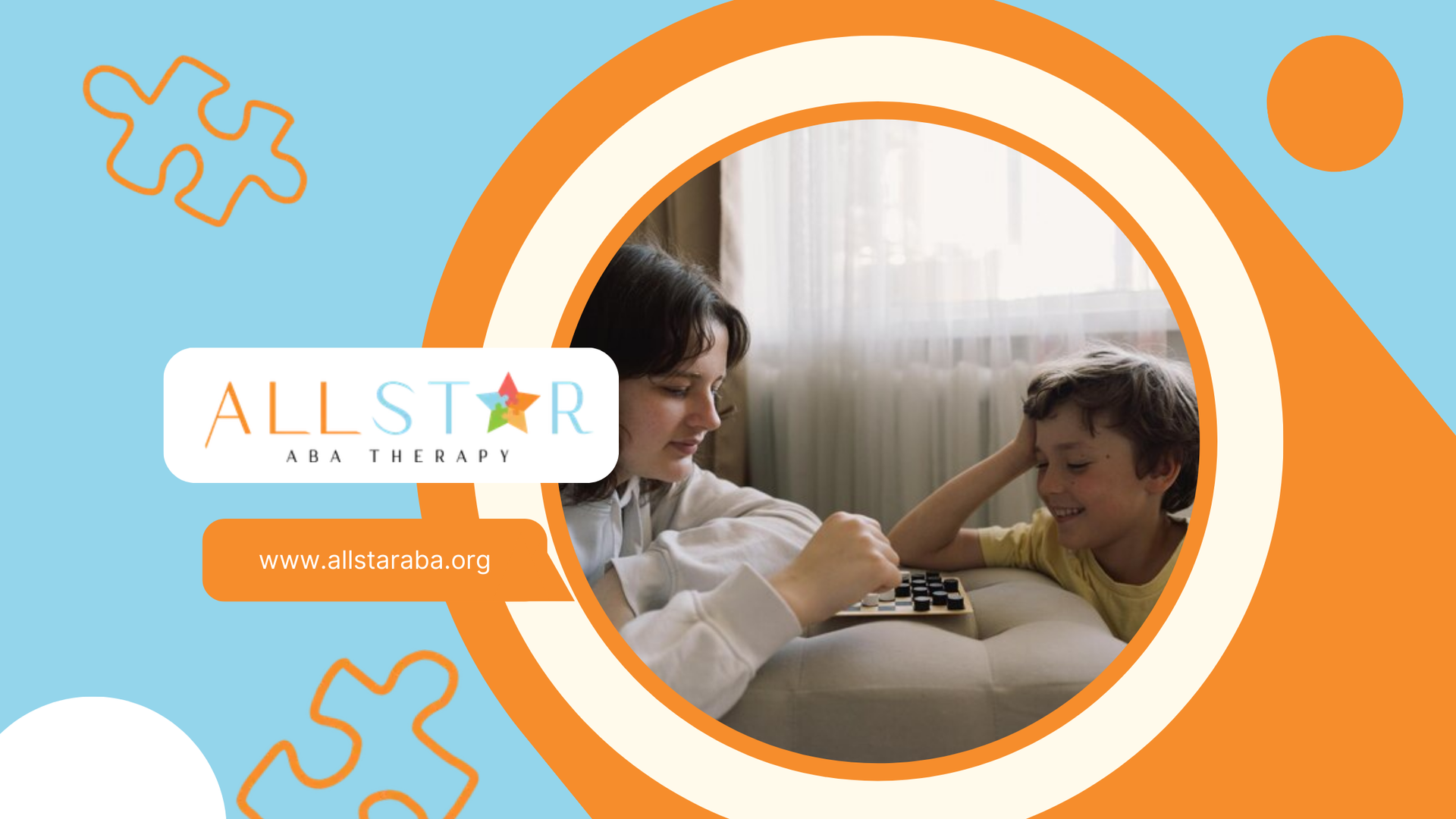| Number | First Name | Last Name | Email Address |
|---|---|---|---|
| 1 | Anne | Evans | anne.evans@mail.com |
| 2 | Bill | Fernandez | bill.fernandez@mail.com |
| 3 | Candice | Gates | candice.gates@mail.com |
| 4 | Dave | Hill | dave.hill@mail.com |
| Number | First Name | Last Name | Email Address |
|---|---|---|---|
| 1 | Anne | Evans | anne.evans@mail.com |
| 2 | Bill | Fernandez | bill.fernandez@mail.com |
| 3 | Candice | Gates | candice.gates@mail.com |
| 4 | Dave | Hill | dave.hill@mail.com |
| Number | First Name | Last Name | Email Address |
|---|---|---|---|
| 1 | Anne | Evans | anne.evans@mail.com |
| 2 | Bill | Fernandez | bill.fernandez@mail.com |
| 3 | Candice | Gates | candice.gates@mail.com |
| 4 | Dave | Hill | dave.hill@mail.com |
| Number | First Name | Last Name | Email Address |
|---|---|---|---|
| 1 | Anne | Evans | anne.evans@mail.com |
| 2 | Bill | Fernandez | bill.fernandez@mail.com |
| 3 | Candice | Gates | candice.gates@mail.com |
| 4 | Dave | Hill | dave.hill@mail.com |
| Number | First Name | Last Name | Email Address |
|---|---|---|---|
| 1 | Anne | Evans | anne.evans@mail.com |
| 2 | Bill | Fernandez | bill.fernandez@mail.com |
| 3 | Candice | Gates | candice.gates@mail.com |
| 4 | Dave | Hill | dave.hill@mail.com |
New Paragraph
New Paragraph
New Paragraph
New Paragraph
The Key to Unlocking Autism: Applied Behavior Analysis Revealed
Understanding ABA Therapy
Applied Behavior Analysis (ABA) is a research-based approach to understanding and modifying behaviors, with a significant focus on individuals with Autism Spectrum Disorder (ASD). It involves the application of behavioral principles to everyday situations with the goal of either increasing or decreasing targeted behaviors.
Basics of ABA Therapy
ABA therapy is grounded in the science of learning and behavior, which helps to understand how behavior works, how behavior is affected by the environment, and how learning takes place. ABA therapy applies our understanding of how behavior works to real situations. The goal is to increase behaviors that are helpful and decrease behaviors that are harmful or affect learning.
The therapy involves the following critical components:
- Assessment: An individualized evaluation to identify specific behavioral challenges and the functions of these behaviors.
- Intervention Planning: Developing tailored strategies to address the identified behaviors.
- Implementation: Carrying out intervention plans consistently across various settings.
- Monitoring: Regularly reviewing and adjusting intervention strategies to ensure they are effective.
A Board Certified Behavior Analyst (BCBA), a trained professional in behavior analysis, leads the development and oversight of ABA interventions. Consistency in the implementation of ABA intervention programs is key, as it ensures the effectiveness of the behavior modification strategies.
Benefits of ABA Therapy
The benefits of applied behavior analysis for autism are numerous. One significant advantage is that ABA therapy is adaptable to meet the unique needs of each individual. It can be modified for a person’s age, interests, skills, preferences, and family situation.
Some benefits include:
- Improved Social Skills: Enhancing the ability of individuals with autism to interact with others and form relationships.
- Better Communication:
Developing the ability to understand and use language effectively.
- Increased Independence:
Teaching practical life skills that allow for a more independent lifestyle.
- Enhanced Academic Performance: Improving focus, organization, and academic tasks.
- Reduced Problem Behaviors: Identifying the reasons for challenging behaviors and teaching alternative behaviors.
Moreover, starting ABA therapy early in life can lead to significant improvements in development. Engaging in ABA therapy before the age of four can greatly enhance social and communication skills, according to findings highlighted by Autism Parenting Magazine.
ABA therapy's adaptability makes it suitable for addressing a wide range of behaviors in people with autism. For more information on the effectiveness of ABA therapy, explore ABA therapy for autism. Those interested in specific ABA techniques can learn more at ABA therapy techniques for autism, and for insight into comprehensive ABA therapy programs, consider visiting ABA therapy programs for autism. For a closer look at how ABA therapy can serve as a critical intervention for autism, read about autism intervention with ABA therapy.
Components of ABA Therapy
Understanding the components of Applied Behavior Analysis (ABA) therapy is crucial for those seeking to implement or learn about this evidence-based approach to autism intervention. This section highlights the key elements that make up ABA therapy, including the role of qualified therapists, the structure of intervention programs, and the identification of behavior functions.
BCBA Therapists
A Board Certified Behavior Analyst (BCBA) is a professional with specialized training in behavior analysis. They are responsible for assessing and analyzing an individual's behavior and developing tailored interventions to address behavioral issues and promote positive behavior changes. According to Autism Parenting Magazine, BCBA therapists are the cornerstone of any ABA therapy initiative, ensuring that each plan is rooted in scientific-based research and best practices for children with autism.
Responsibilities of a BCBA Therapist:
- Conducting behavioral assessments
- Writing and overseeing ABA intervention programs
- Training technicians and caregivers
- Monitoring and evaluating progress
For more information on how BCBA therapists contribute to ABA therapy for autism, visit our detailed guide.
ABA Intervention Programs
ABA intervention programs are the structured plans written by BCBA therapists that outline the specific methods and techniques to be employed during therapy sessions. These programs are essential for ensuring consistency across sessions and among different technicians who work with the child. The Autism Parenting Magazine emphasizes the necessity of consistent implementation for the effectiveness of behavior modification.
Key Components of ABA Intervention Programs:
- Individualized goals and objectives
- Detailed intervention strategies
- Data collection procedures
- Criteria for measuring success
Families and educators can explore various ABA therapy programs for autism to find the most suitable option for their needs.
Functions of Behavior
In ABA therapy, understanding the functions of behavior is imperative for creating effective intervention plans. Behavior analysts focus on identifying the reasons behind certain behaviors, such as escape, attention, access to tangibles, and automatic reinforcement. By pinpointing these functions, therapists can address the root cause of behaviors rather than just the symptoms. This insight allows for more targeted and successful interventions.
Functions of Behavior in ABA:
- Escape: Behaviors aimed at avoiding tasks or situations
- Attention: Behaviors seeking social interaction or attention
- Access: Behaviors directed toward obtaining desired items or activities
- Automatic: Behaviors that are self-stimulating and not influenced by social factors
For further details on how ABA therapists utilize the understanding of behavior functions in autism intervention with ABA therapy, follow our comprehensive discussion.
These components of ABA therapy are integral to its application and effectiveness in helping individuals with autism. By working with qualified BCBA therapists, following structured ABA intervention programs, and addressing the functions of behavior, significant progress can be made in the lives of those with Autism Spectrum Disorder (ASD).
Techniques in ABA Therapy
Applied Behavior Analysis (ABA) therapy is a structured, scientific approach that aims to improve social, communication, and learning skills through positive reinforcement and other techniques. This section delves into the various techniques used in ABA therapy, each designed to address specific behavioral challenges associated with Autism Spectrum Disorder (ASD).
Positive Reinforcement
One of the cornerstone techniques in ABA therapy is positive reinforcement. This involves providing a child with a reward whenever they display a desirable behavior. The reward is something that the child finds valuable, which could be praise, a toy, or a favorite activity. The immediate reward makes it more likely that the child will repeat the behavior in the future.
For example, if a child with autism uses words to ask for a toy, and as a result, receives the toy, the child learns that communicating effectively leads to positive outcomes. An ABA therapy provider highlights the effectiveness of this approach in reducing ASD symptoms.
Negative Reinforcement
In contrast to positive reinforcement, negative reinforcement involves the removal of an unpleasant stimulus when the desired behavior is displayed. This method can motivate a child to engage in the preferred behavior to avoid something they find disagreeable.
It's important to note that negative reinforcement is not about punishment. It's about creating a situation where the child learns that by behaving in a certain way, they can avoid discomfort. For instance, if a child dislikes a noisy environment, turning off the noise when they accomplish a task can serve as negative reinforcement.
Generalization in Therapy
Generalization is a key technique in ABA therapy where children are encouraged to apply what they have learned in therapy to other settings, such as home or school. This can involve practicing skills in different environments or with different people to help the child learn that the skills are applicable in various situations.
Generalization enhances the overall learning experience for children with autism by helping them understand that the skills they acquire are not just for therapy sessions but can be used in their everyday lives. This is fundamental for their long-term development and independence.
Discrete Trial Training
Discrete Trial Training (DTT) is a structured ABA technique where skills are broken down into small, manageable steps. A therapist will present a task, prompt the correct response if necessary, and then reward the child for a correct answer. This method allows children to focus on one element at a time and receive immediate feedback, which can be very effective in teaching new skills.
DTT sessions are carefully planned and monitored to ensure that children are progressing and that the skills they learn are being retained. The structured nature of DTT makes it a powerful tool in the ABA therapist's repertoire.
Extinction Techniques
Extinction techniques in ABA therapy focus on reducing unwanted behaviors by removing the reinforcement that is maintaining the behavior. For example, if a child learns that screaming leads to extra attention from parents, therapists may recommend that the parents do not give attention when the child screams. Over time, the child will learn that screaming does not give them the desired outcome.
The goal of extinction is to help children learn that certain behaviors will not be rewarded, encouraging them to seek out alternative, more positive behaviors that will lead to reinforcement.
Each of these techniques plays a crucial role in ABA therapy. By using a combination of positive and negative reinforcement, generalization, discrete trial training, and extinction, therapists can create a comprehensive program tailored to the individual needs of each child with autism. For more information on ABA therapy programs, visit our page on ABA therapy programs for autism. To explore the intervention process, check out autism intervention with ABA therapy. For an in-depth look at specific ABA therapy techniques, click on ABA therapy techniques for autism.
Importance of Early ABA Intervention
The significance of timely Applied Behavior Analysis (ABA) intervention for autism cannot be overstated. Early intervention is critical in enhancing the developmental trajectory and quality of life for children with Autism Spectrum Disorder (ASD). This section will discuss the benefits of early intervention, its impact on development, and how it supports family dynamics.
Early Intervention Benefits
Initiating ABA therapy at a young age is pivotal for achieving the best possible outcomes. Evidence suggests that starting
ABA therapy before the age of four can substantially improve a child's social interactions and communication abilities. Moreover, when intervention begins before the age of three, it tends to be more effective, leading to enhanced skills, diminished behaviors that hinder development, and an overall better quality of life.
| Age of ABA Intervention | Expected Benefits |
|---|---|
| < 3 Years | Enhanced communication skills, reduced disruptive behaviors, improved social interactions |
| 3-4 Years | Continued developmental improvements, though potentially less significant than <3 Years |
Impact on Development
Early ABA intervention can be transformative for a child with autism, equipping them with essential skills for a successful life. Through structured and tailored ABA therapy programs, children learn to navigate their environment more effectively, communicate their needs, and engage socially with peers and family members. This foundation paves the way for ongoing growth and progress, highlighting the profound influence that early therapy can have on a child's developmental journey.
Jocelyn Thompson, LCSW, BCBA, emphasizes that the sooner a child receives intervention, the greater the impact on their developmental outcomes and overall life satisfaction. Such an approach is not only beneficial for the child but also for the entire family unit, fostering an environment conducive to learning and growth.
Family Dynamics and Support
The positive effects of early ABA intervention extend beyond the individual child, influencing family dynamics as well. Providing resources and tools through early autism intervention with ABA therapy helps parents and siblings better understand, interact with, and support the child. This knowledge reduces stress within the household, strengthens familial bonds, and creates a supportive atmosphere for everyone involved.
By investing in early ABA intervention, families can benefit from:
- Increased understanding of autism and effective management strategies
- Improved communication within the family
- A support system that reduces the emotional and logistical pressures of raising a child with autism
In conclusion, early ABA intervention is a cornerstone of effective autism therapy, offering profound benefits that resonate throughout a child's developmental journey and the family's overall well-being. By seizing the opportunity for early therapy, parents can set the stage for a brighter, more fulfilling future for their children with ASD.
Critiques of ABA Therapy
While Applied Behavior Analysis (ABA) is widely used for autism intervention with ABA therapy, it has faced several criticisms over the years. This section will explore historical criticisms, the focus on behavior elimination, and the neurodiversity perspective regarding ABA therapy.
Historical Criticisms
ABA therapy has evolved significantly since its inception. However, its historical use of punishments alongside rewards has remained a point of contention. Critics argue that past practices were overly demanding on children due to the intensive and repetitive nature of the therapy. Even though punishments are no longer part of modern ABA practices, the legacy of such techniques has contributed to ongoing skepticism. Proponents of ABA counter that current methods are less repetitive and strive to make learning engaging and enjoyable for children.
Focus on Behavior Elimination
A considerable critique of ABA is its perceived emphasis on eliminating unwanted behaviors rather than fostering skill development. Critics argue that such an approach might overlook the importance of nurturing positive skills and behaviors in children with autism. Some ABA practitioners acknowledge this critique and emphasize the need for the therapy to also concentrate on guiding children towards constructive behaviors, not just extinguishing negative ones. This shift in focus aims to provide a more balanced and developmental approach within ABA therapy programs for autism.
Neurodiversity Perspective
From the neurodiversity perspective, some autistic self-advocates argue that ABA therapy endeavors to make autistic children conform to neurotypical standards. They suggest that this could potentially undermine the unique needs and ways of being inherent to autistic individuals. Instead of teaching autistic children to imitate neurotypical behaviors, these advocates promote therapies like speech and language intervention, which they believe can be more beneficial for enhancing skills and independence.
In response to these concerns, practitioners of ABA clarify that the therapy does not aim to change how neurodiverse children think or feel. Rather, they assert that ABA's primary goal is to help children leverage their strengths and engage with society to the fullest extent possible, thus enriching their lives and experiences.
The critiques of ABA therapy highlight the importance of ongoing dialogue and adaptation within the field. As with any therapeutic approach, it is essential to continually review and refine practices to ensure they align with the best interests of the individuals receiving support. For those interested in learning more about the techniques used in ABA, visit our page on ABA therapy techniques for autism.
Studies and Effectiveness of ABA
Applied Behavior Analysis (ABA) is a widely used intervention for individuals with Autism Spectrum Disorder (ASD). The effectiveness of ABA has been studied extensively, and research findings often guide practitioners in optimizing ABA therapy techniques for autism.
Research Findings
The impact of ABA on individuals with ASD has been documented across various domains. A significant body of research, including a study from the National Center for Biotechnology Information (NCBI), noted improvements across seven of the eight outcome measures for children and youth with ASD undergoing ABA interventions. These improvements span cognitive, language, social/communication, problem behavior, adaptive behavior, emotional, and autism symptoms domains. However, it was also noted that quality of life (QoL) was not measured in these studies.
Another study conducted a meta-analysis of 14 randomized control trials involving 555 participants and found that ABA interventions showed significant effects for socialization, communication, and expressive language in children with ASD. Nonetheless, the analysis revealed no significant effects for general symptoms of ASD, receptive language, adaptive behavior, and several other outcomes.
Effectiveness of ABA Interventions
ABA-based interventions are diverse, including the Early Start Denver Model (ESDM), Picture Exchange Communication Systems (PECS), and Discrete Trial Training (DTT), among others. These interventions have been shown to have significant effects on improving socialization, communication, and expressive language in children with ASD.
When ABA interventions are applied early in childhood and are both long-term and comprehensive, they tend to result in positive medium to large effects in areas such as language development, intellectual functioning, daily living skills, and social functioning, compared to control groups not receiving ABA.
ABA Compared to Other Interventions
While ABA therapy is one of the most researched and practiced interventions for ASD, it is important to compare its effectiveness to other therapies. The research indicates that ABA-based interventions can lead to significant improvements in targeted areas. However, it is crucial to tailor the intervention to the individual's needs and to consider a multi-faceted approach that may include other therapies and support systems.
For parents, family members, and professionals looking for more information on ABA therapy interventions for autism in Baltimore, Maryland, our resources for ABA therapy for autism, including ABA therapy techniques for autism, provide comprehensive guidance. Additionally, exploring autism intervention with ABA therapy can offer insights into creating effective, personalized ABA therapy programs (ABA therapy programs for autism) for individuals with ASD.
The table below summarizes the effectiveness of ABA interventions based on the aforementioned studies:
| Outcome Measure | Effectiveness |
|---|---|
| Cognitive Development | Positive Effects |
| Language & Communication | Positive Effects |
| Socialization | Positive Effects |
| Problem Behavior | Improvement Noted |
| Adaptive Behavior | Mixed Results |
| Emotional Development | Improvement Noted |
| Autism Symptoms | Positive Effects |
These findings highlight the critical importance of ABA in improving the lives of individuals with ASD and emphasize the need for ongoing research to optimize and tailor interventions.
Need Support?
We're Here to Help!
Our experienced team is ready to assist you. Reach out today to discuss how we can support your child's development and well-being.
Get started with expert ABA therapy today.
Related posts

All Star ABA ©2024

All Star ABA delivers the gold standard of care, Applied Behavioral Analysis (ABA) therapy, for individuals diagnosed with ASD, from infancy to age 21.
Quick Links







